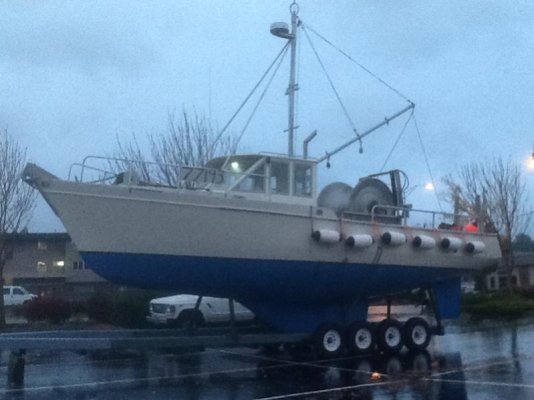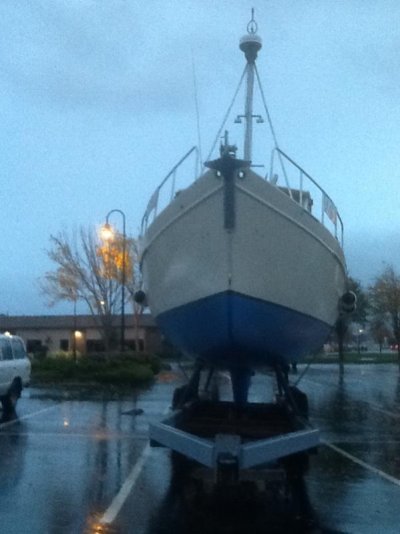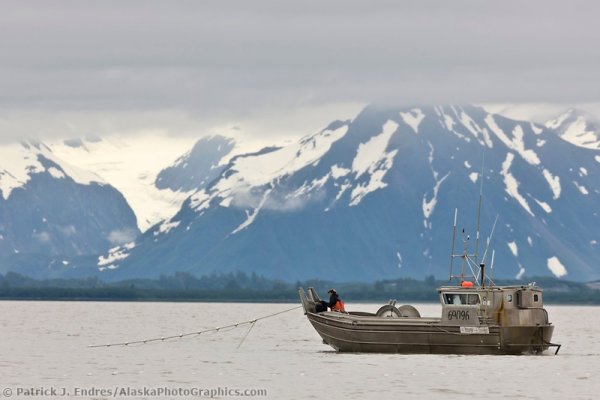This was waiting to go into the Seaview North yard this weekend. From all appearances it's a sailboat that has been tuned into a gillnet boat. I suppose one could do the same thing if one wanted an open ocean diesel cruiser. Sorry for the hideous image quality-- I grabbed the shots on my iPad as we left to drive home this evening.









